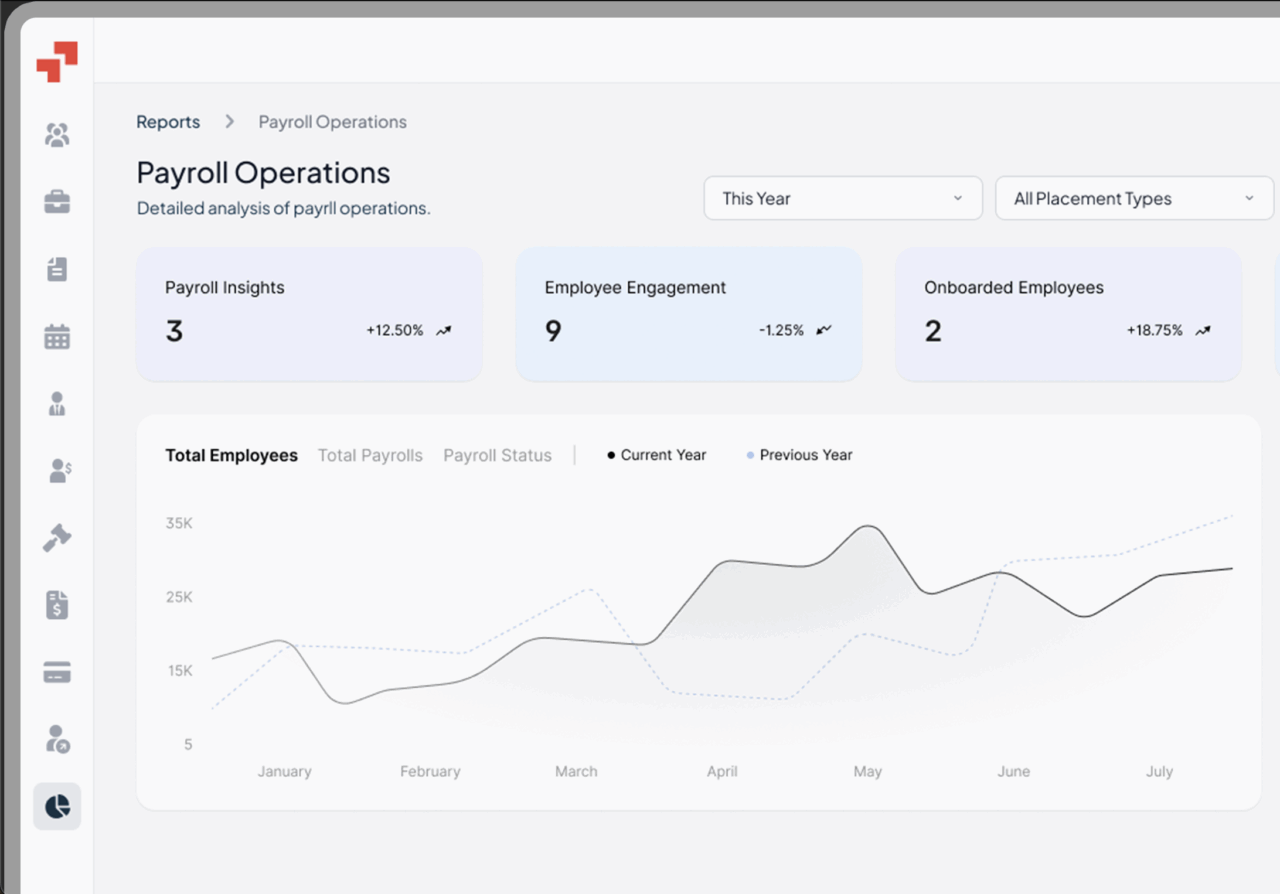Global Workforce GlossaryWhat is Paid Time Off (PTO)?
Related Terms
Floating Holiday
Leave of Absence (LOA)
Unpaid Time Off
Parental Leave
Statutory Benefits
Paid Time Off (PTO) is a benefit that allows employees to take time off from work while still receiving pay.
It consolidates vacation, personal days, sick leave, paid family leave, paid holiday, and personal time into a single bank of hours. PTO policies vary across the US, UK, and EU, with legal mandates like the EU Working Time Directive source ensuring minimum leave entitlements. PTO helps companies maintain morale, reduce burnout, prevent burnout, and comply with labor laws.
Table of Contents
- What is Paid Time Off (PTO)?
- How Paid Time Off works?
- How is paid time off calculated?
- What are the best policies of PTO?
- Types of PTO
- Paid Time Off vs Vacation Days
- What is the difference between paid time off and protected paid time off?
- Can paid time off be denied?
- Paid time off Examples
- Example Scenario
- FAQs
How Paid Time Off works?
Understanding how a company’s PTO policy works is essential, as it outlines the guidelines for accruing, scheduling, and using paid time off. Employees earn or accrue time based on company policy, seniority, or hours worked. They request time off in advance, subject to manager approval and operational needs. Once approved, PTO is deducted from the employee’s accrued time, but the pay remains unchanged.
In the US, PTO is often flexible; in the EU, legal minimums apply. Automated HR or payroll systems streamline accrual tracking and ensure compliance across jurisdictions. Understanding how PTO works helps employees maximize their employee benefits and maintain job performance.
How is paid time off calculated?
PTO calculation typically depends on accrual rate, employment type, and hours worked.
For example, an employee might earn 1.25 days per month, totaling 15 days per year. Some companies use hourly accrual, where the number of hours of PTO is calculated based on the number of work hours an employee works such as 0.046 hours of PTO accrued per hour worked.
PTO accrual is often based on the number of hours an employee works, and accrual-based PTO systems allow employees to accumulate accrued PTO over time, similar to a savings account. European countries mandate statutory minimums (e.g., 20 days in the UK) source. Accurate calculation ensures budget predictability, legal compliance, and fairness across global teams.
What are the best policies of PTO?
Best practices include flexible, transparent accrual systems, clear approval workflows, and rollover or cash-out options. Encouraging PTO use prevents burnout. Integrating sick leave and personal days into a PTO bank or PTO banks simplifies administration and offers employees greater flexibility.
Effective PTO administration and the utilisation of PTO banks can simplify HR processes and streamline leave management. Some companies offer PTO as a lump sum at the start of the year, while others use accrual systems with a maximum number of hours employees can earn.
Policies for unused PTO may include rolling over hours to the following year, cashing out accrued unused PTO upon separation, or providing separate paid time for holidays and special occasions. Policies should align with local labor laws, corporate culture, and operational needs, while data-driven tracking ensures cost efficiency. Companies like Salesforce and HubSpot lead with generous, flexible PTO policies that drive retention and engagement.
Types of PTO
Common PTO types include paid family leave, bereavement leave, paid sick leave, maternity leave, paternity leave, jury duty, paid holidays, floating holiday, unpaid time, vacation days, personal leave, sick leave, public holidays, and parental leave.
Paid Holidays: Paid holidays may include publicly recognized holidays and floating holidays for non-public events or personal occasions.
Sick time: Sick time is used for recovery from illness or injury, including medical treatment for the employee or a family member.
Bereavement leave: Bereavement leave is typically granted for the loss of a family member or immediate family member, with a pre-determined or pre-determined amount of days employees can take, though some companies may offer flexibility.
Part time emplyees: Part time employees and part time workers are often eligible for prorated PTO based on their work schedules.
Most companies recognize the importance of these leave types and may have different policies for other employees. Companies recognizing diverse needs may offer separate paid time for special occasions or unique circumstances. In Europe, PTO may also include mandated care leave, while in the US, PTO typically merges vacation and personal leave. Understanding the distinctions is crucial for cross-border compliance and payroll accuracy.
Paid Time Off vs Vacation Days
Vacation days are a subset of PTO, traditionally earmarked for rest and travel, and are typically pre-planned vacation time that may last from a few days to two weeks. Vacation time is often scheduled as pre-planned time to minimize workplace disruption and ensure smooth workflow management. PTO consolidates vacation, personal, and sometimes sick leave into a single pool. PTO offers employees flexibility, while vacation days are fixed. For executives, PTO provides a simplified tracking mechanism and financial predictability across jurisdictions, whereas separate vacation tracking may increase administrative complexity.
What is the difference between paid time off and protected paid time off?
Protected PTO is legally mandated and cannot be denied or forfeited, such as statutory leave in the UK or parental leave in the EU. Regular PTO may be discretionary and subject to employer approval. Protected PTO safeguards employee rights and avoids fines for non-compliance, whereas discretionary PTO offers operational flexibility but requires careful policy enforcement to prevent disputes.
Can paid time off be denied?
Yes, PTO can be denied if operational needs conflict with the requested period, unless the leave is legally protected. Companies often require advance notice and manager approval, and a company’s policies may specify particular times or blackout periods when employees cannot schedule time off. Denial policies must comply with local labor laws, be documented clearly in the employee handbook, and be consistently applied to avoid discrimination claims or morale issues.
Paid time off Examples
US employee: accrues 10 days PTO/year, requests 5 days for vacation, approved, salary unchanged as the company continues to pay employees while they are on PTO. When an employee takes PTO and then returns, employees return refreshed and more productive.
UK employee: statutory 28 days/year, including public holidays, uses 10 for holiday, rest protected. Unused PTO may be rolled over to the following year or paid out according to company policy and local regulations.
EU employee: 20 days PTO/year plus parental leave, PTO deducted from accrual. Unused PTO is subject to local laws, which may require payout or allow carryover into the following year.
Examples illustrate global variations, ensuring executives can design fair, compliant policies.
Example Scenario
Consider whether to work with one global provider, multiple regional specialists, or a hybrid approach. Global providers offer consistency but may lack local expertise, while regional vendors provide deep market knowledge but require more coordination overhead.
Example:
Consider a Series B fintech startup needing to hire 50 engineers across Europe within six months. Without proper benefits administration infrastructure, they face compliance risks in each country, inconsistent employee experiences, and potentially months of delays during the enrollment process . With strategic benefits administration, the right platform, local expertise, partnerships, and scalable processes, they onboard talent seamlessly while building competitive advantage through superior offerings.
FAQs
Can you cash out PTO at any time?
Not always. US policies may allow cash-out on resignation or per company policy. EU/UK generally prohibit cashing out statutory PTO except on termination. Clear policy communication avoids disputes.
How does PTO affect your paycheck?
PTO is paid at the employee’s regular rate. Proper accrual ensures payroll accuracy. Miscalculations can result in overpayment, underpayment, or compliance risks source.
How many days of PTO is standard?
US: 10–20 days/year; UK: 28 days (statutory); EU: 20–25 days (statutory). Executive planning should align PTO with global talent benchmarks.
Can you get paid time off for mental health?
Yes, increasingly common in the US and EU. Some organizations categorize mental health as sick leave or personal PTO. Compliance with local labor laws is mandatory.
Hire the Best Talent, Anywhere






